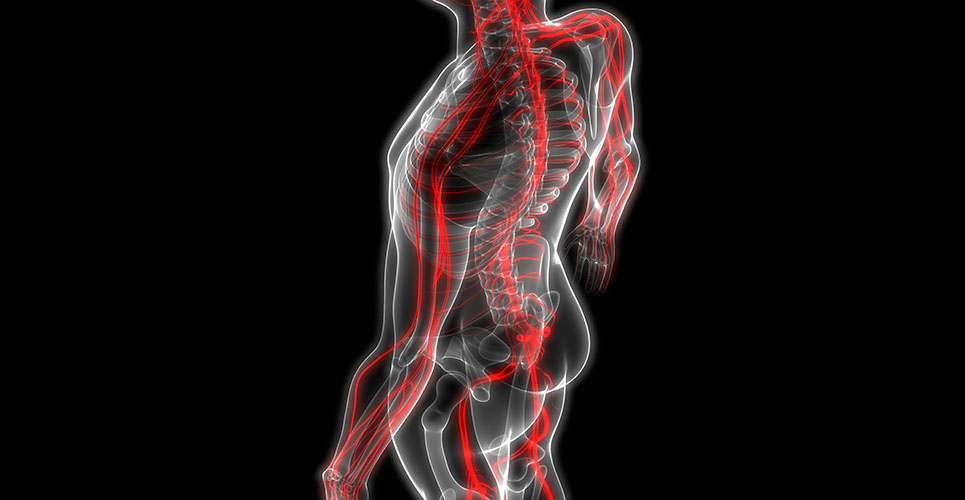Biogen and Ionis Pharmaceuticals, Inc have announced end of study results from CHERISH, the Phase III study evaluating Spinraza® (nusinersen) for the treatment of individuals with later-onset 5q spinal muscular atrophy (SMA), were published in The New England Journal of Medicine.
The full manuscript titled, “Nusinersen Versus Sham Control in Later-Onset Spinal Muscular Atrophy,” appears in the 15 February 2018 issue of The New England Journal of Medicine.
Biogen and Ionis Pharmaceuticals, Inc have announced end of study results from CHERISH, the Phase III study evaluating Spinraza® (nusinersen) for the treatment of individuals with later-onset 5q spinal muscular atrophy (SMA), were published in The New England Journal of Medicine.
The full manuscript titled, “Nusinersen Versus Sham Control in Later-Onset Spinal Muscular Atrophy,” appears in the 15 February 2018 issue of The New England Journal of Medicine.
“The publication of CHERISH study results in The New England Journal of Medicine emphasises nusinersen’s meaningful motor function and upper limb improvements [from baseline] in individuals with later-onset SMA rarely seen in the natural course of the disease, which is typically a continued decline in motor function over time,” said Eugenio Mercuri, MD, lead study investigator, U.O.C. Neuropsichiatria Infantile – Policlinico Universitario “A. Gemelli”, Rome, Italy. “During the study, some individuals treated with nusinersen achieved motor milestones including crawling or standing with assistance, or saw a stabilisation or slowing of disease progression. We also saw an improvement [from baseline] in upper limb function, including raising objects.”
The pre-specified CHERISH primary endpoint was improvement in motor function, as defined by change from baseline in the Hammersmith Functional Motor Scale-Expanded (HFMSE). The HFMSE is a validated tool specifically designed to assess motor function in individuals with SMA. The final analysis demonstrated a highly statistically significant and clinically meaningful improvement in motor function in individuals treated with nusinersen versus the sham control,1 as observed by the treatment difference of 4.9 points in the mean change from baseline to Month 15 in the HFMSE score (95% CI, 3.1, 6.7; p=0.0000001).1,2 When measuring changes from baseline, individuals who received nusinersen (n=84) achieved a 3.9 point mean improvement at Month 15 [95% CI: 3.0, 4.9], while individuals who were not on treatment (n=42) experienced a mean decline of 1.0 point [95% CI: -2.5, 0.5].1 Primary endpoint results of the end of study analysis were consistent with the interim analysis.
“As the first and only approved treatment for SMA, the data published in The New England Journal of Medicine continue to underscore the benefit of nusinersen to individuals with later-onset SMA,” said Alfred Sandrock, MD, PhD, executive vice president and chief medical officer at Biogen. “The CHERISH data are part of the largest clinical development programme to date for the treatment of SMA. The programme in its entirety shows that nusinersen has the potential to positively impact the motor function of children with SMA regardless of the age or stage of their disease.”
Nusinersen demonstrated a favourable benefit-risk profile. Safety data were consistent with those expected in the general SMA later-onset population and in individuals undergoing lumbar puncture and were similar to those reported in an open-label study in later-onset SMA.1
“The CHERISH data published today together with the results from the Phase III ENDEAR study in individuals with infantile-onset SMA, which were published last November in The New England Journal of Medicine, emphasises the therapeutic potential of nusinersen in individuals with SMA,” said C Frank Bennett, PhD, senior vice president of research and leader of the neurological disease franchise at Ionis. “We believe the fact that both nusinersen pivotal studies have been published in a prestigious journal is a testament to the robustness of our SMA clinical development programme.”
Following the positive interim analysis, Biogen ended the CHERISH study early so all participants could have the option to receive nusinersen in the SHINE open-label extension study. In addition to SHINE, Biogen continues to collect and evaluate data to provide a deeper understanding of the efficacy and safety of nusinersen across 5q SMA populations. The nusinersen clinical development programme includes more than five years of data and is the largest body of evidence for an interventional approach in SMA.
References
- E. Mercuri, B.T. Darras, C.A. Chiriboga, J.W. Day, C. Campbell, A.M. Connolly, S.T. Iannaccone, J. Kirschner, N.L. Kuntz, K. Saito, P.B. Shieh, M. Tulinius, E.S. Mazzone, J. Montes, K.M. Bishop, Q. Yang, R. Foster, S. Gheuens, C.F. Bennett, W. Farwell, E. Schneider, D.C. De Vivo, and R.S. Finkel,. Nusinersen Versus Sham Control in Later-Onset Spinal Muscular Atrophy. N Engl J Med. 2018;378:625-35.
- SPINRAZA Summary of Product Characteristics (SmPC). November 2017.

